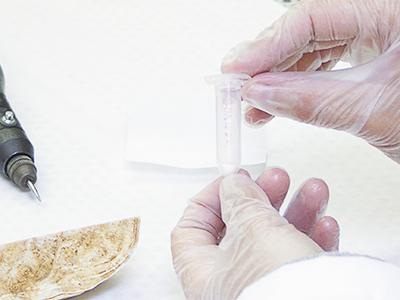ACHEULOAFRICA
The Project "The Evolution of the Acheulian and Homo erectus, 1.75-0.2 Ma, field investigations at Gona (Ethiopia), Ain Boucherit-Ain Hanech and Tighennif (Algeria)" investigates the evolution of the Acheulian technology in East Africa and North Africa between 1.7 and 0.2 million years ago.
ATAPUERCA
The Pleistocene and Holocene of the Sierra de Atapuerca. Hominid Paleobiology and Settlement Patterns in Europe, Brain and Cognition and Geological and Geochronological Framework.
COLEVOLUTION
This operation, Physical and Digital Collections for the Evolution of Knowledge (COLEVOLUTION), is expected to continue creating, expanding and making available to the community the Center's own reference collections. This action includes the acquisition of 3D digital microscopy equipment and computerized microtomography equipment that will allow, through virtual analysis techniques, the incorporation of new specimens and information associated with the collections.
Dissemination of the European DEATHREVOL project: in search of the origin of funerary behavior.
The main objective of this project is for the public not only to discover the scientific results of the research conducted during the DEATHREVOL project, but to actually make them participants in the research process itself.
EC ERC StG DEATHREVOL
Death and mortality are experiences shared by all humans and play an important role in almost all cultures around the world. A central part of this shared experience is the presence of funerary rites and practices, but little is known about when they emerged. The EU-funded DEATHREVOL project aims to reach a conclusion on the time of the first emergence of this 'culture of death'. As such, it will conduct classical and innovative taphonomic analyses in addition to researching fossil records concerning samples from the Middle Pleistocene and European Paleolithic periods to find traces of funerary rites.
ERC AdG Tied2Teeth
Recent advances in the biological sciences have revealed how genes control the developmental processes that make our teeth. The Tied2Teeth project builds on the discovery that some of these genes also influence the developmental processes that underlie other parts of our bodies, such as hair texture, mammary glands, and body size. We will be investigating the details of how non-dental traits are interconnected with dental variation, how this varies across humans, and how this has evolved through time.
Evociencia: annual action plan of the UCC+I of CENIEH
"Evociencia" is a project of the Unit of Scientific Culture and Innovation (UCC+I) of CENIEH that aims to bring the research and work carried out in its laboratories of CENIEH to all types of public, and to involve society in the knowledge generated at the Center, developing a culture of human evolution.
Foundation Palarq India
With this project, we will investigate evolutionary processes within the Achelense and transitions to Middle Paleolithic (MP) cultures, which involved major behavioral changes in Africa and parts of Eurasia.
Foundation Palarq Morocco
The Aïn Beni Mathar-Guefaït region lies in the northwestern extreme of a great physiographic unit of the Maghreb. In the north of this region, the Guefaït 4 site offers an assemblage of large mammals, including elephants, rhinoceros, hippopotamus and, above all, a primitive species of horse, Hipparion. This community of mammals is accompanied by a sizable number of rodents and reptiles, dominated by a giant turtle, which places the site at the start of the Quaternary, with a lake set in a savanna environment.
Foundation Palarq Tighennif (ex. Ternifine), Algeria
This research project proposes to conduct comprehensive paleoanthropological investigations at the Early Stone Age site of Tighennif (ex. Ternifine) (Algeria). Tighennif has yielded the oldest North African hominins associated with faunas and Acheulean stone tools.


